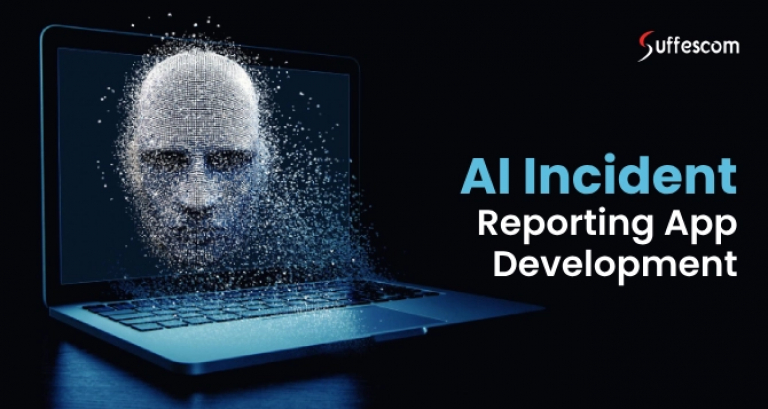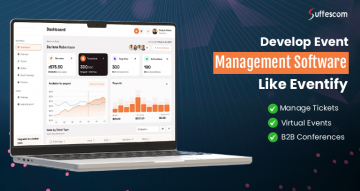AI Incident Reporting App Development: Features and Costs Explained

In this volatile world, real-time incident reporting allows organizations to stay resilient and continuous. The AI incident reporting app aims at automating the detection, reporting, and response of significant incidents in enterprises with the power of smart automation. Specially designed for sectors like infrastructure, logistics and manufacturing, the app utilizes AI and real-time analytics to convert incident information into actionable intelligence.
An AI-powered disaster reporting system has the potential to quickly detect, categorize, and elevate incidents. All this is possible with equipment breakdown, environmental risks, or safety violations via easy-to-use interfaces and sophisticated machine learning algorithms.
With in-built predictive analytics, multilingual functionality, and customizable workflows, the AI incident reporting app enables organizations to go beyond fire-drill responses. Rather, it invokes proactive risk management and smart decision-making, critical aspects in contemporary disaster management planning.
Working Model of AI-Powered Disaster Reporting System
1. Data Collection & Integration
The platform collects incident data from varied sources including IoT sensors, CCTV cameras, mobile applications, social media streams, and user input. APIs provide effortless integration with current enterprise systems like ERP, EHS, and emergency response systems for EHS incident management software development.
2. Preprocessing & Data Validation
Raw input data is preprocessed for noise elimination, format standardization, and detection of anomalies to provide accurate and reliable data. False positives are removed, and confirmatory checks are performed by AI models based on cross-checked data points.
3. AI-Driven Incident Detection & Classification
With machine learning algorithms such as convolutional neural networks for image or video inputs and natural language processing for text inputs, the system automatically detects in real time the nature and severity of incidents.
4. Automated Alert Generation & Prioritization
Based on incident categorization and risk assessment templates, prioritized alerts are created by the system. Critical incidents also send instant alert notifications to assigned responders through multiple media (SMS, email, mobile push notification).
5. Dynamic Workflow & Response Coordination
A workflow engine with customizable features drives incidents along suitable escalation channels, allocating tasks to concerned teams. It accommodates collaboration via dashboards, chat, video meetings, and swimming pool incident report AI agent.
6. Predictive Analytics & Reporting
Historical incident data is used to inform predictive models to predict future risks, allowing preemptive action. Detailed reporting and compliance documentation for audit and review are produced by the system.
7. Non-Stop Improvement
AI models are iteratively improved through feedback loops over time, enhancing detection precision and response efficacy with each incident cycle.
Stay ahead Of The Curve With Disaster Management Software Development Services!
AI-Powered Disaster Management Software Development: Effective Use Cases Driving Growth
1. Safety & Compliance
IoT and camera feed-based monitoring of factory floors, construction sites, and safety zones identifies dangerous behavior, equipment malfunction, or environmental danger. It also ensures regulatory compliance in the form of precise, timestamped event records.
2. Disaster Management
AI-powered environmental & hazard software enables secure detection and swift emergency responses to events like earthquakes, fires, and chemical leaks. These happenings trigger the generation of alerts and reports with time and geolocation from the GPS and SOS features so that first responders and authorities can make timely interventions.
3. Direct Routing
When customers complain about power loss, communication breakdown, the app's AI directs such complaints to respective utility companies such as Bahamas Power and Light (BPL), BTC, ALIV, or Water & Sewerage directly. This minimizes the role of manual intervention and accelerates response time.
4. Infrastructure Monitoring
The disaster management software has AI capabilities that can sense failure in large infrastructure such as power lines, pipelines, and transport systems. It also gives early warning ahead of failure to avoid expensive breakdowns or public safety risks.
5. Corporate Risk Management
The software empowers organizations to recognize certain internal risks, such as cyberattacks, system failures, or workplace violence. This also decreases liabilities from insurance, thereby making a strengthened organization.
6. Urban Safety
Develop an incident report system for city monitoring to track urban safety and crowd movements. It acts as a beneficial tool for managing public events, protests, or traffic disruptions.
Key Advantages of an AI-powered Disaster Reporting System
1. Real-Time Detection
AI monitors extensive data sets in real-time, ensuring early identification of anomalies. Be it a cyberattack, workplace accident, or operational failure, AI will identify early warning signs and alert associated teams in a matter of seconds. The response capability in seconds averts escalation and reduces the total effect of incidents.
2. Improved Accuracy
Human errors like incomplete records, inconsistent vocabularies, or biased judgments characterize traditional reporting. AI-powered incident reporting app reduces such anomalies to a great extent and normalizes data inputs and objectively interprets patterns.
3. Risk Prevention
Aside from reactive incident response, AI is capable of processing past incident information to determine trends and forecast possible future threats. AI predicts machinery failure based on historical maintenance and anticipates issues before they become a reality. Organizations can put preventive controls in place, lowering downtime and safety risks.
4. Workflow Optimization
Swimming pool incident report assistant streamlines documentation through the automated creation of incident reports, assignment of relevant data, and transmission of information to specific departments or stakeholders. The administrative tasks for employees are reduced, and accelerate the overall incident management life cycle.
5. Valuable insights
AI incident management software handles large quantities of incident information, turning raw data into actionable results. The advanced analytical tools analyze performance and make decisions backed by data. This strategic advantage offers continuous enhancement and long-term risk management.
6. Scalability
AI incident reporting app seamlessly integrates with other digital platforms like HR, security, or maintenance systems. This creates a cohesive incident management ecosystem and improves scalability to the next level without hindering any performance.
7. Accessibility
The app interface is universal in design to accommodate young and elderly users alike, aged between 12 and 75+. Voice commands, readable fonts, simplified layout, and visual icons, in addition to AI personalization, make the app user-friendly.
Disaster Management Software Development: Salient Features Handling Increasing Workloads
1. User Registration
Develop an incident report system that allows users to add personal information, including resident names, age, NIB numbers, and details about disability or special needs. This information helps DRMA identify vulnerable groups and develop tailored evacuation or support strategies during emergencies.
2. Weather Map
Provides a live weather map that has coverage of all the islands in the area. Powered by AI-backed meteorological data sources, the map offers real-time coverage of rain, wind speed, storm systems, and other weather conditions. The feature has live weather and hazard maps presenting real-time details of hazardous situations, such as flood points, impassable roads, or fire incidents.
3. Push Notifications
The AI incident management software provides users with hourly storm updates. The AI-powered environmental & hazard system facilitates weather pattern analysis and delivers accurate details, enabling Users to make proactive safety decisions during extreme weather conditions.
4. Admin Dashboard
The DRMA dashboard is a unified, real-time command centre for tracking incidents, weather, user warnings, and resource mobilization. It leverages AI to optimize emergency reports in priority order, helping dispatch services efficiently by considering factors such as severity, location, and response status.
5. One-touch emergency attribute
Provides emergency services connections related to ambulance, fire brigade, and police instantly. AI guarantees the real-time routing of an emergency report to the correct service, including dispatch coordination and follow-up tracking by DRMA officials.
6. Geo-tagging
Users are able to geotag their home location and pick household members from a drop-down. This location-specific, detailed information is only visible to DRMA admins for evacuation during emergencies, checking on welfare, or sending aid to particular homes in case of disasters.
7. Multilingual Interface
The AI incident management software includes a multi-language interface that caters to people belonging to different parts of the world. The platform supports different languages like English, Spanish, Haitian Creole and more to attract and grab the attention of a massive user base.
How to Build an AI Incident Reporting App?
1. Requirement Gathering
EHS incident management software development commences with a proper grasp of the problem domain. This includes carrying out stakeholder consultations with safety officers, IT professionals, operations managers, or HR professionals to collect comprehensive requirements.
2. System Architecture Design
This entails choosing the front-end interface, the back-end infrastructure, and the AI models to implement. Data flow diagrams, user role definition, and security protocols for safeguarding sensitive incident data are also part of the system design. Scalability and compatibility with other systems are also mapped out at this point.
3. Data Collection
In this phase, historical reports of incidents, logs, emails, images, sensor readings, or voice calls, whatever the use case for the app, need to be collected. The data is cleaned, marked, and formatted. Preprocessing can involve text normalization for NLP operations, feature extraction, and anonymization in order to ensure privacy. This dataset becomes the basis for training AI models.
4. Training AI Models
Depending on the specific application use cases, suitable AI and machine learning models are created. NLP models are trained on written reporting, and computer vision models identify hazards from images. Models are repeatedly trained and fine-tuned to improve efficiency to the ultimate level.
5. Building App Interface
The interface is designed to be easy to use, particularly for workers reporting incidents in stressful or urgent circumstances. Features generally include forms with auto-suggest inputs triggered by AI, voice-to-text reporting, camera support, incident analytics dashboards, and alerts. Multi-language support, accessibility, and offline functionality are also added.
6. Backend Development
AI elements are then integrated into the backend to develop an incident report system. This involves provisioning secure databases to hold incident information, APIs for integrating AI services, and workflow automation logic such as allocating incidents, sending alerts, or creating compliance reports. Backend development also guarantees real-time operation and features, including authentication mechanisms, audit logs, and data encryption.
7. Quality Assurance
The application is tested thoroughly after EHS incident management software development is over. Functional testing verifies that all functionality is working as intended, while AI testing verifies the accuracy and impartiality of forecasts. Usability testing is done with actual users to ensure design compliance.
8. Deploy And Maintenance
The app is rolled out to production environments, submitted to the app stores, and launched for public use. The mobile app maintenance services ensure constant updates, regular checkups, new feature integration, overall optimization, risk management, safety, and compliance.
Power Your Business With Disaster Management System Development- Get Started Today!
How Much Does it Cost to Build an AI-Powered Incident Reporting System?
AI Incident reporting app development cost ranges between $8,000 - $30,000, based on the complexity involved. Go through the factors affecting the cost;
1. Feature Set: Basic features are less expensive, whereas advanced features with a touch of cutting-edge technologies contribute to massive development costs.
2. Platform choice: Developing for multiple platforms incurs higher costs, as compared to cross-platform development frameworks .
3. Backend Infrastructure: Admin dashboards, data storage, live feeds, and integration with external systems require a solid backend, which tends to amplify time and cost for EHS incident management software development.
4. Security and Compliance: Apps dealing with individual data need to have data encryption, secure authentication, and perhaps comply with data protection legislation, adding to total cost of AI EHS incident management software development.
5. UI/UX Design and Accessibility: Designing for all age ranges (12–75+), making it accessible, and supporting multilingual support add UI/UX complexity and testing expenses.
6. Maintenance and AI Model Updates: Server hosting, bug fixing, and retraining AI models on fresh data are long-term expenses.
Choose Suffescom for Disaster Management Software Development!
As a trustworthy AI development company, we have excelled in building AI-powered disaster management software that is personalized to project requirements. From scalable infrastructure to user-centric design and delivering high-performance solutions, we do it all.
We have a talent pool of professionals who develop AI incident report generator software using the latest technologies, and our team is dedicated to giving top-notch support to the clients and delivering services at reasonable prices. We have over 13 years of experience and a robust portfolio, with an emphasis on both client satisfaction and technical expertise. We make strong testing procedures to ensure a bug-free, efficient application.
FAQs
1. How much time does it take to build AI-Powered Disaster Management Software?
AI-powered disaster management software development takes around 4-5 weeks, based on the necessary integrations and futuristic design.
2. Can the AI-powered disaster reporting system be integrated into existing software?
Yes. Necessary API integrations are crucial for AI EHS incident management software development. It allows linking of the disaster management system with the existing software.
3. How does the AI-powered environmental & hazards system offer security?
MFA, IDS/IPS, encryption, and OAuth 2.0 are responsible for verifying user identity and authenticating their access.
4. How does the app prioritize reported incidents?
The app handles the lifeguard incident report smartly. The automation attributes, configured severity levels, allow the critical incidents escalation, informing the right people at the right time.







